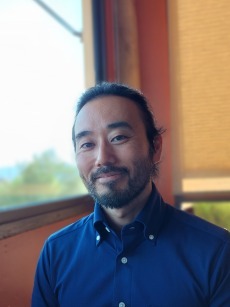
Takashi Miura's research focuses on Japanese religions in the early modern and modern periods. He is the author of Agents of World Renewal: The Rise of Yonaoshi Gods in Japan (2019, University of Hawai'i Press). In this book, he examines the spread of the concept of "world renewal" (yonaoshi) in Japanese society from the late eighteenth to early twentieth centuries and highlights the rise of "yonaoshi gods," a new category of divinities that emerged during this time period. He is currently working on his second book, in which he analyzes the history of deified peasants in the early modern period and its impact on subsequent religious practices in Japan. At the University of Arizona, he teaches courses on Japanese religions and Buddhism. He received his B.A. (Religion & Japanese-English Translation) and M.A. (Asian Religions) from the University of Hawai'i at Manoa and his Ph.D. (Asian Religions) from Princeton University.
Publications:
Agents of World Renewal: The Rise of Yonaoshi Gods in Japan (2019). Honolulu: University of Hawai'i Press.
Articles:
"Healing Illness at the End of the World: A Millenarian New Religion in Post-war Japan" (forthcoming). In Bloomsbury Handbook of Religious Ecstasy, eds. Alison Marshall, Rubina Ramji, and Michael Wilkinson, New York: Bloomsbury Publishing.
"Cosmology and Time" (2024). In The New Nanzan Guide to Japanese Religions, eds. Matthew D. McMullen and Jolyon Baraka Thomas, Honolulu: University of Hawai'i Press, pp. 105–116.
"The Filial Piety Mountain: Kanno Hachiro and the Three Teachings" (2019). Japan Review 34: pp. 95–111.
“The Ee ja nai ka and the Meiji Restoration: A View from Nagoya through Hosono Yosai’s Kankyo manpitsu” (2019). Journal of Religion in Japan 7 (3): pp. 201–218.
“Shinto Is the Indigenous Religion of the World: Deguchi Onisaburo and His Shinto Universalism” (2018). Journal of Religion in Japan 7 (1): pp. 57–81.
“Yonaoshi no saikosatsu: shukyoshi teki kanten kara” (2018). In Kami to hotoke no Bakumatsu ishin, eds. Iwata Mami and Kirihara Kenshin, Kyoto: Hozokan, pp. 79–102.
“The Buddha in Yoshiwara: Religion and Visual Entertainment in Tokugawa Japan as Seen through Kibyoshi” (2017). Japanese Journal of Religious Studies 44 (2): pp. 225–254.

